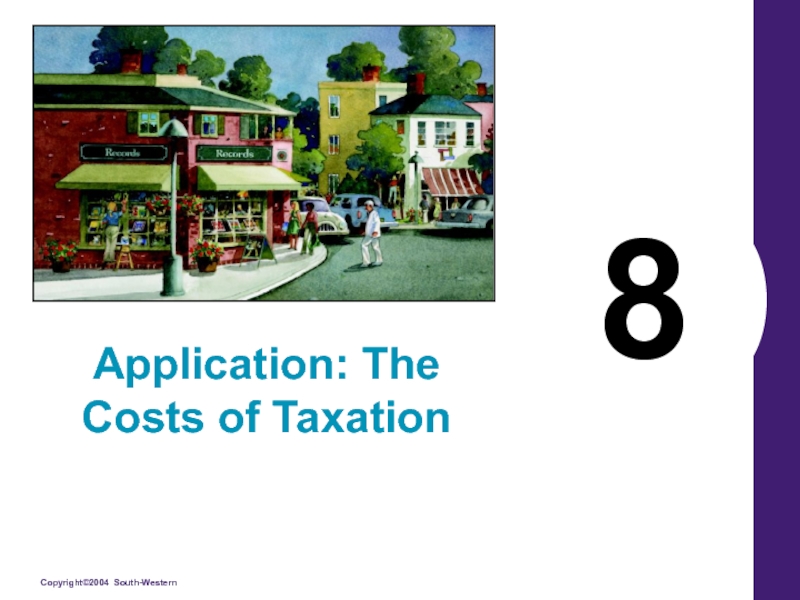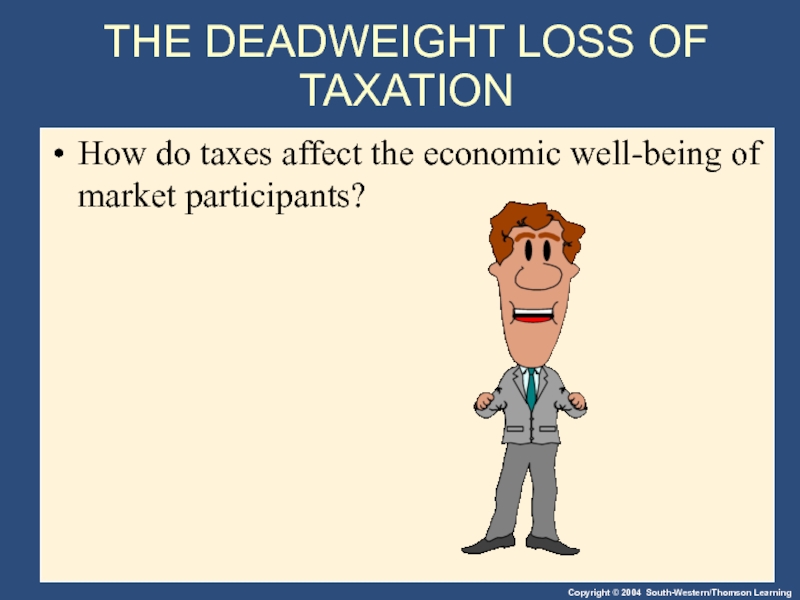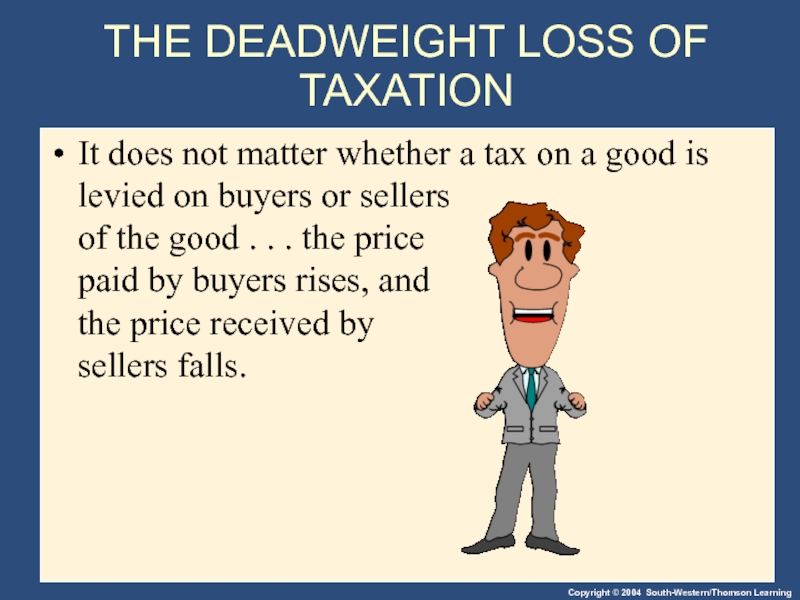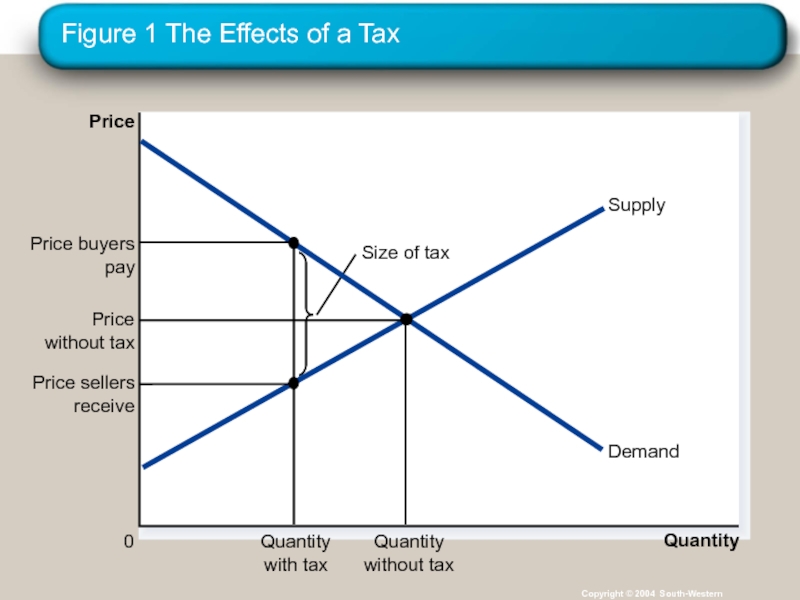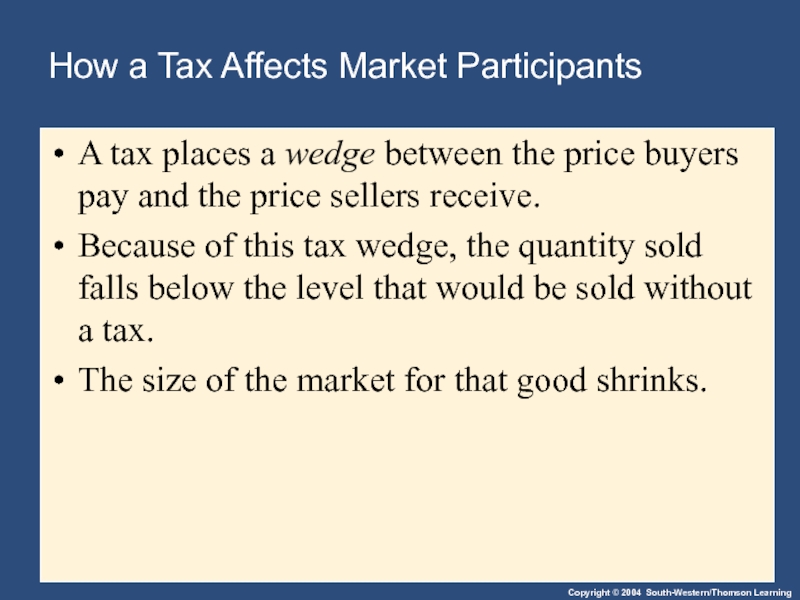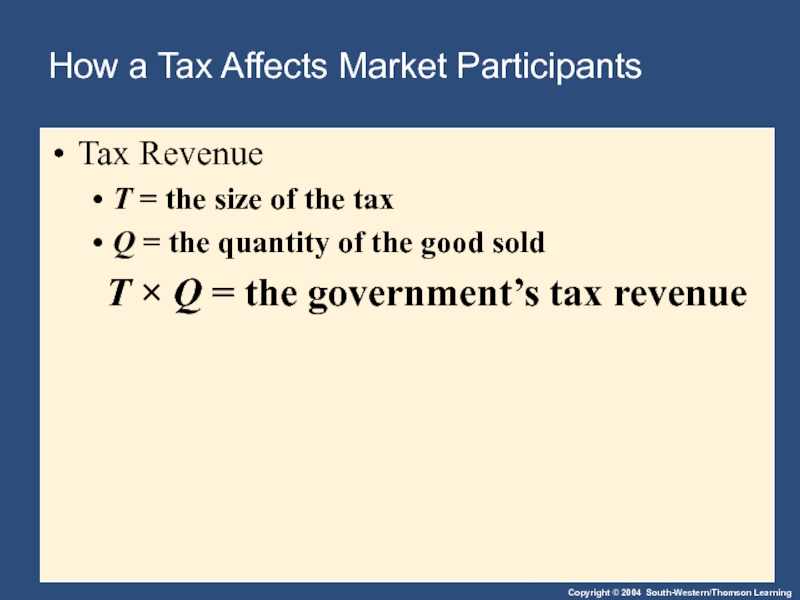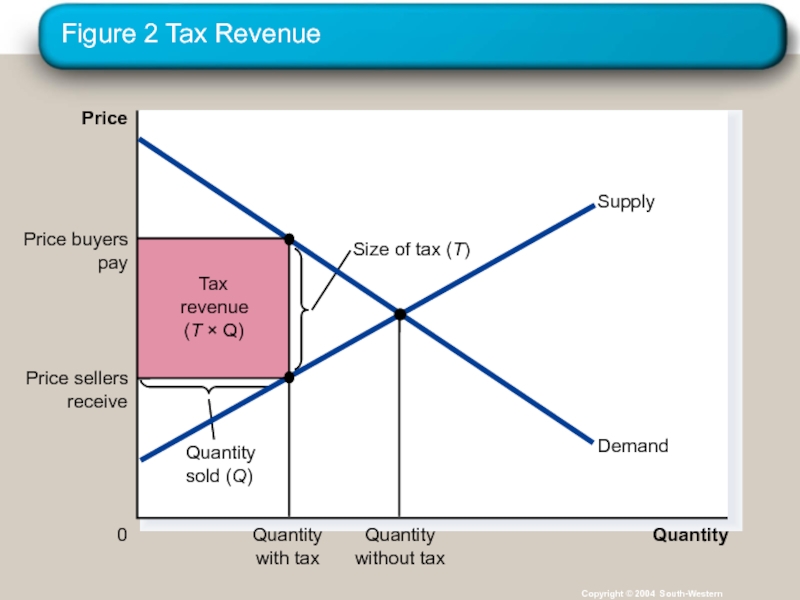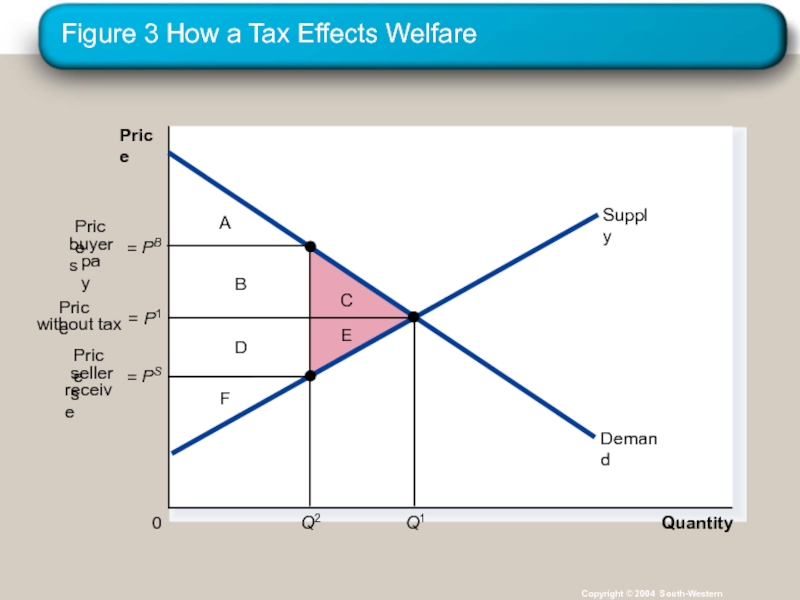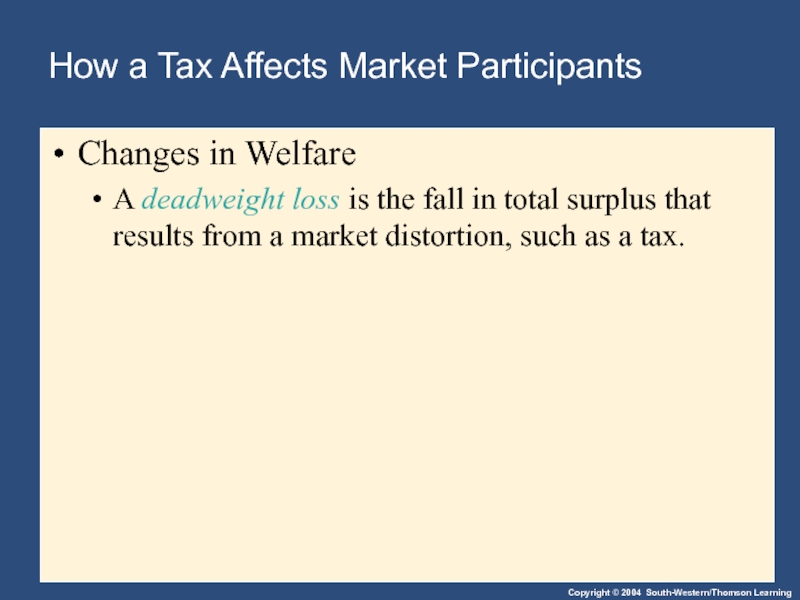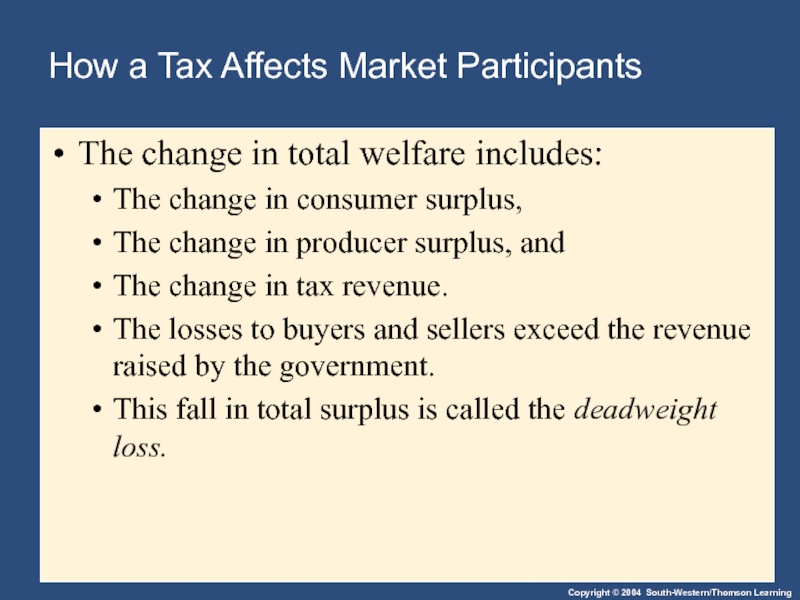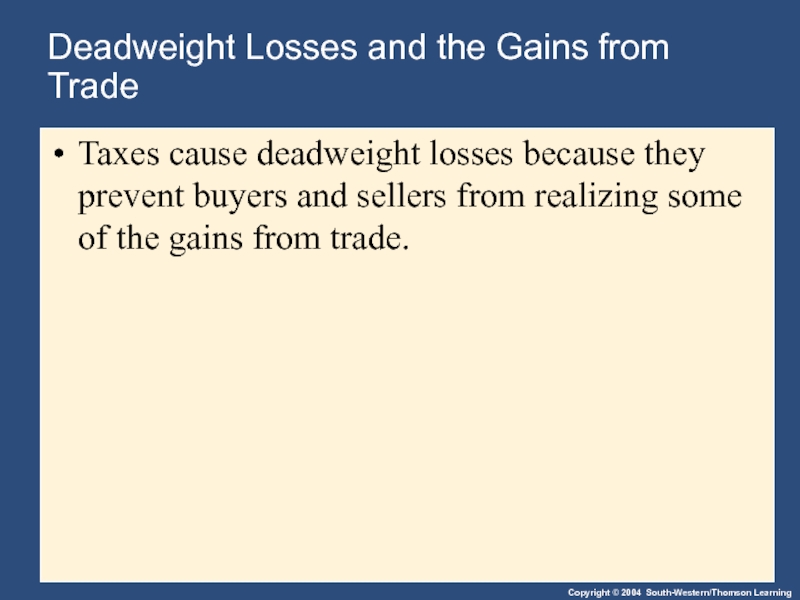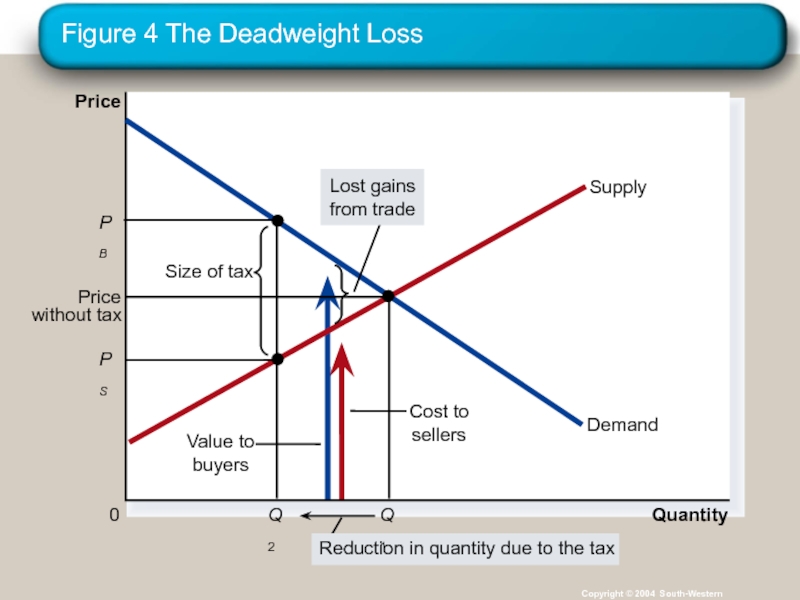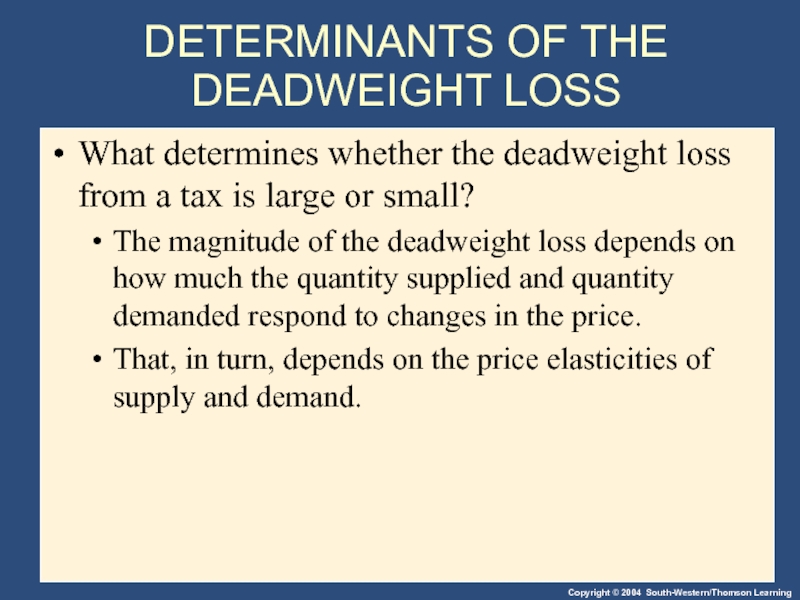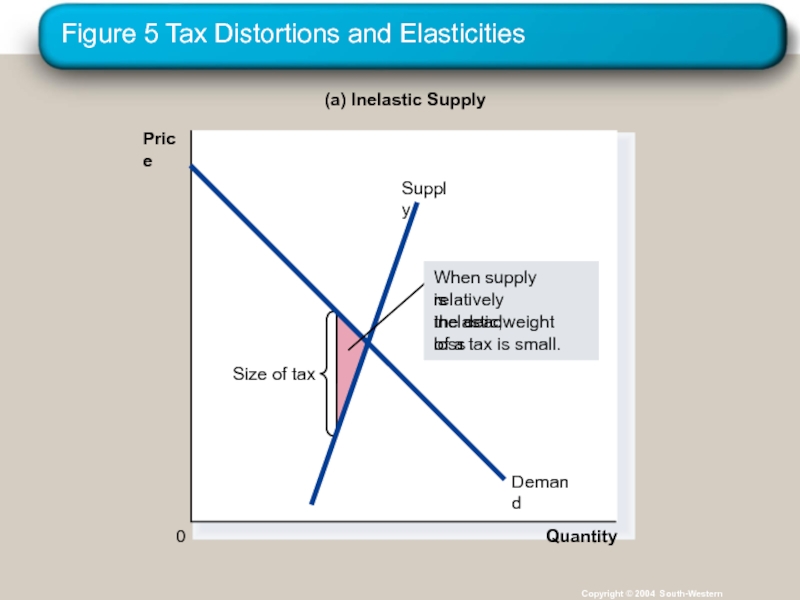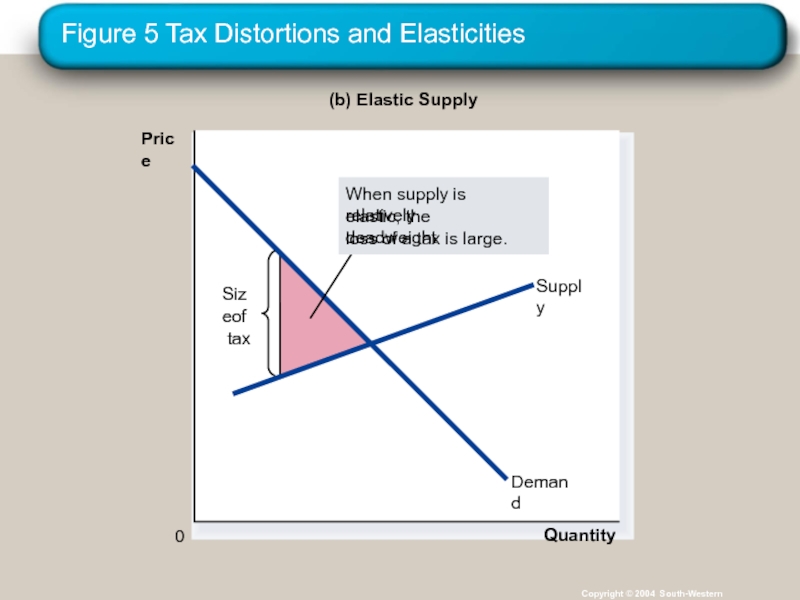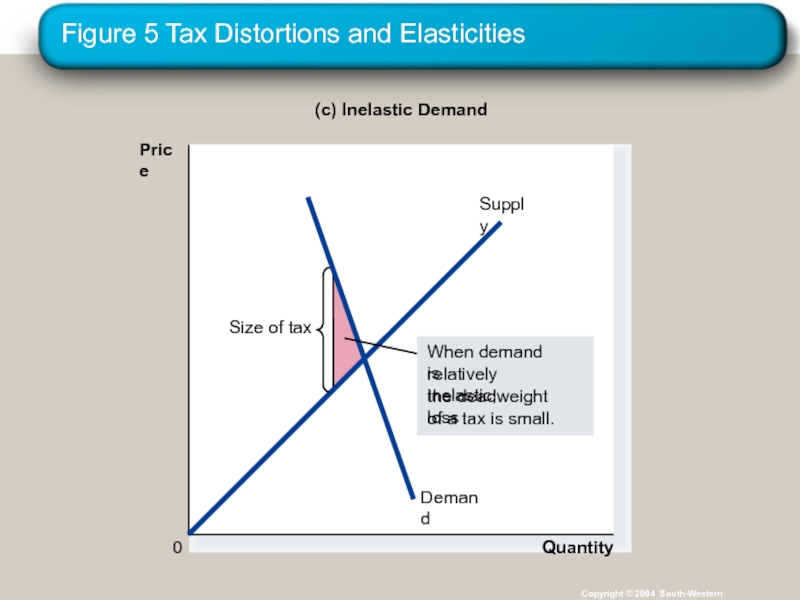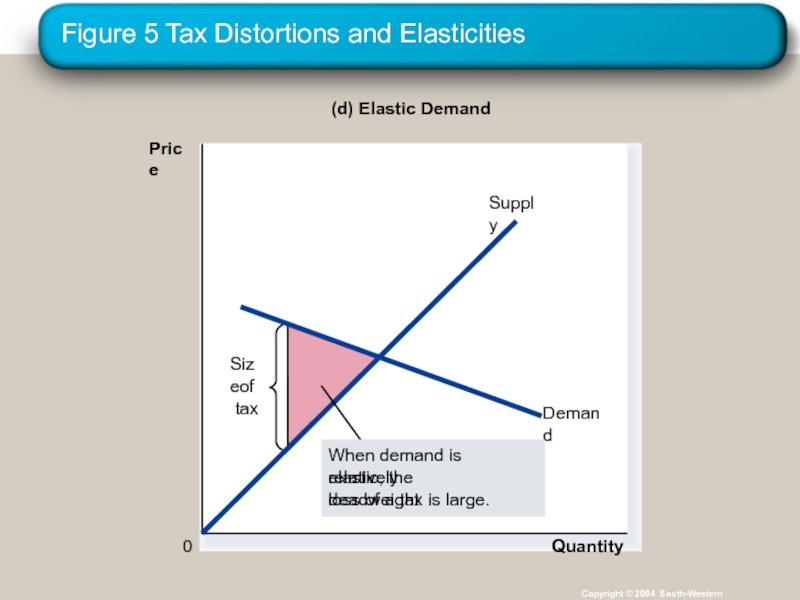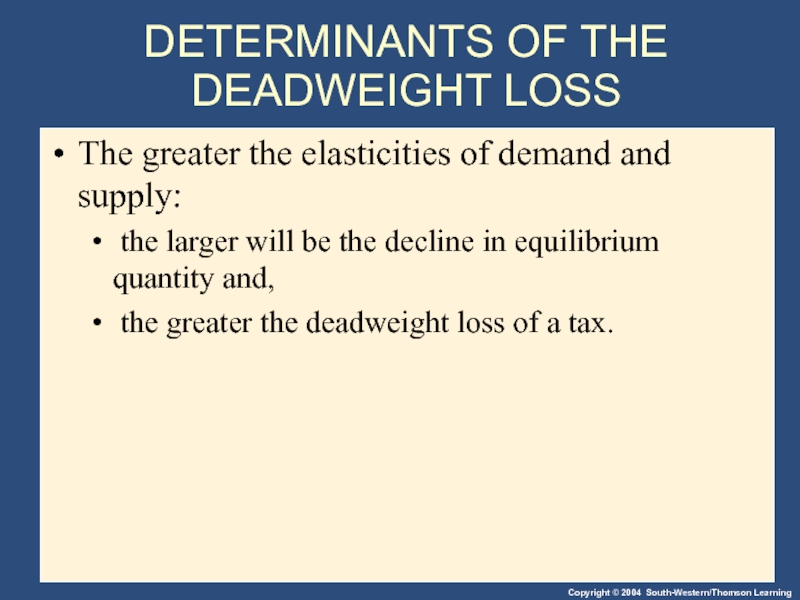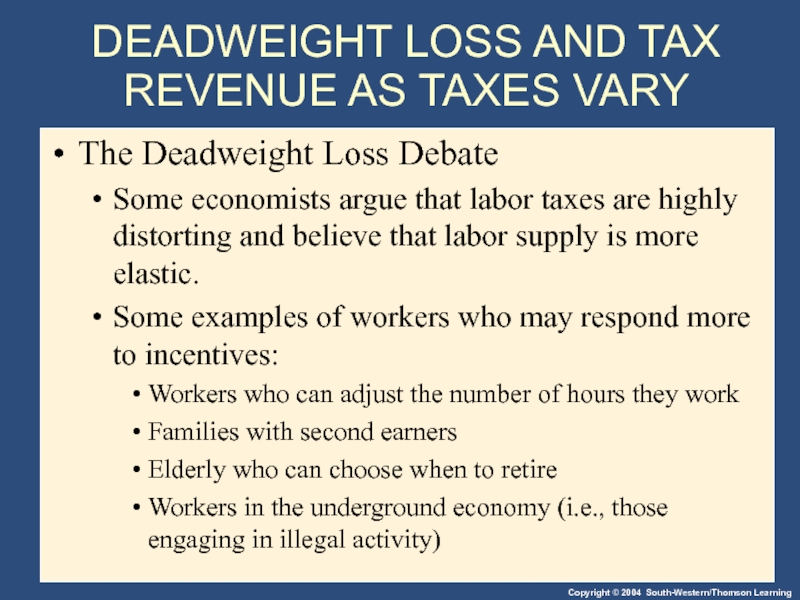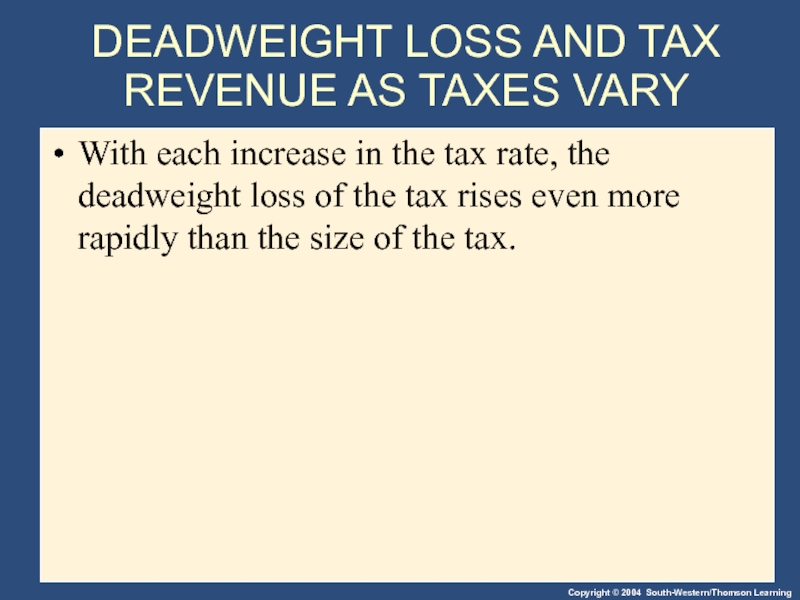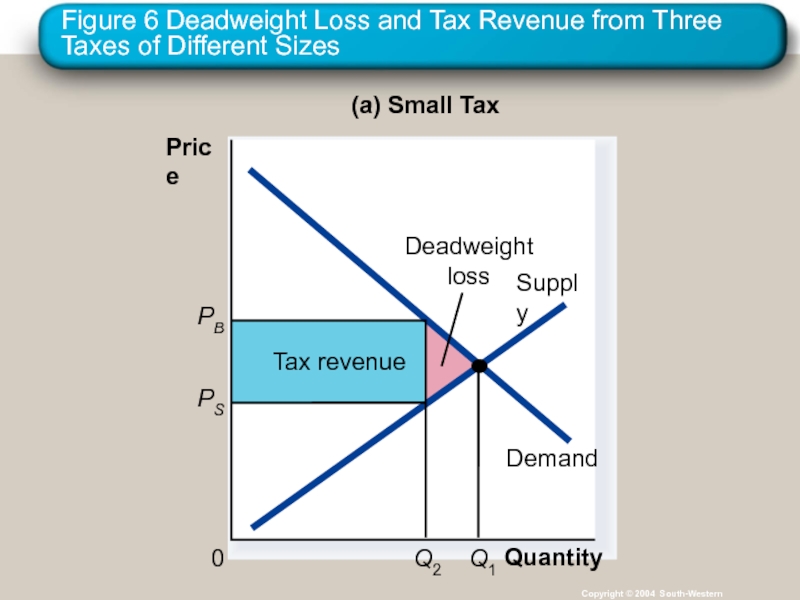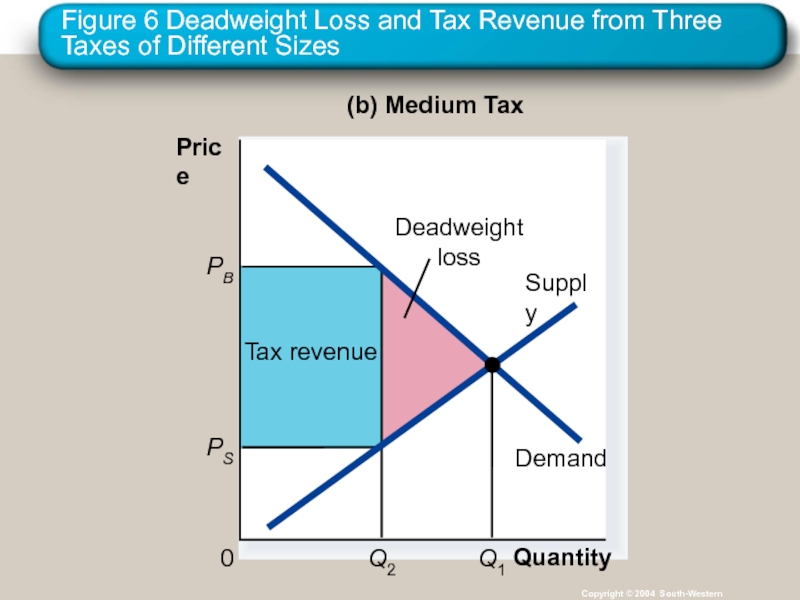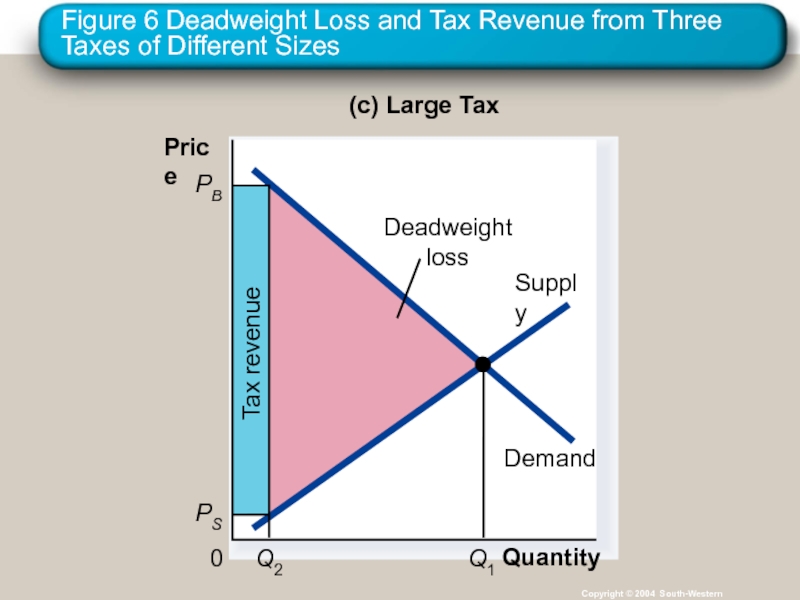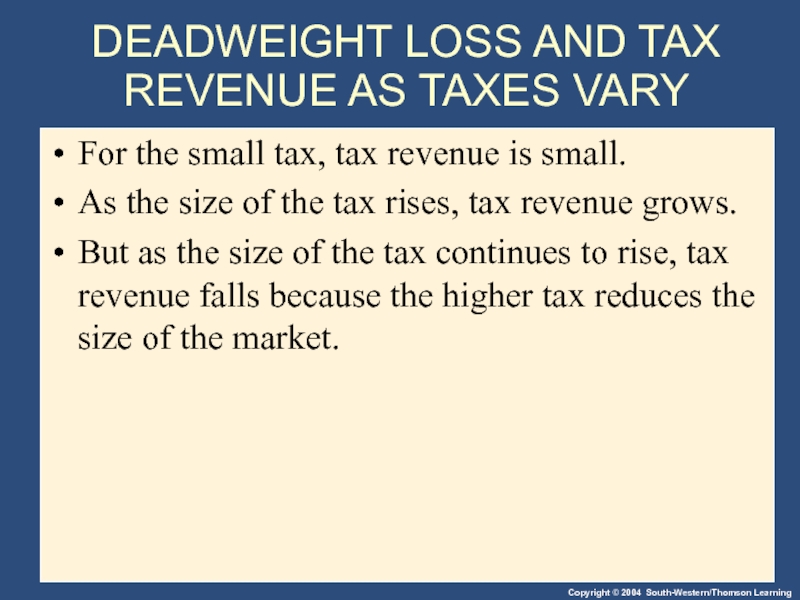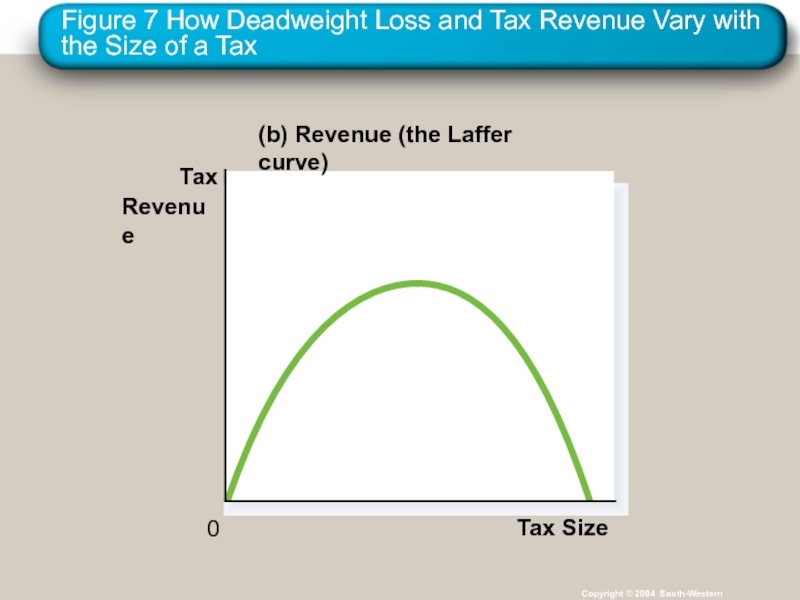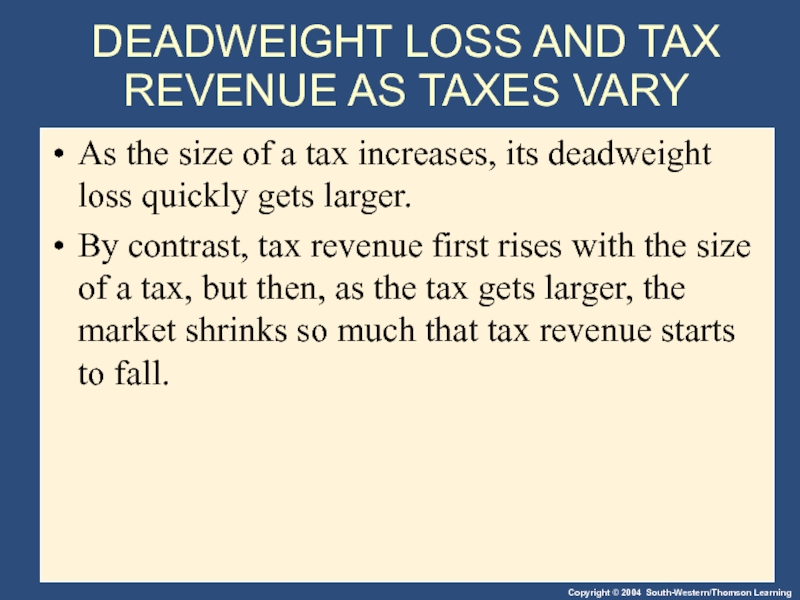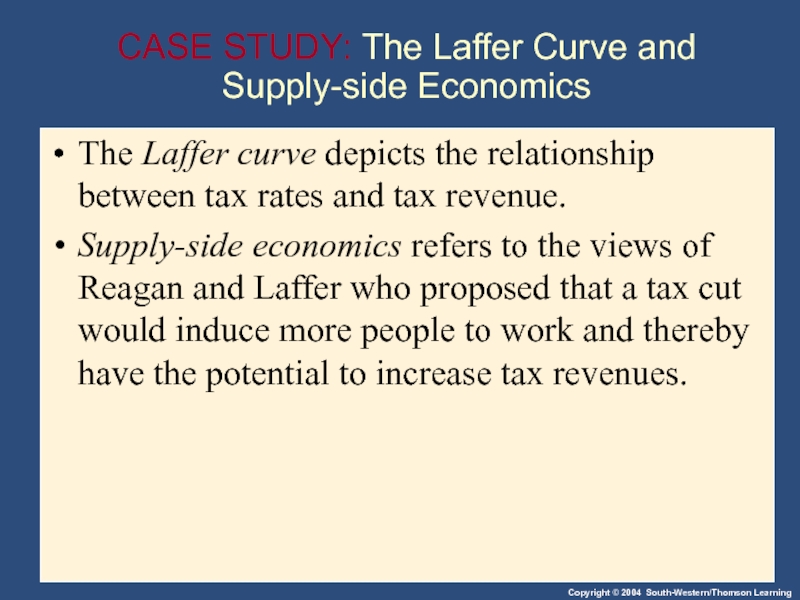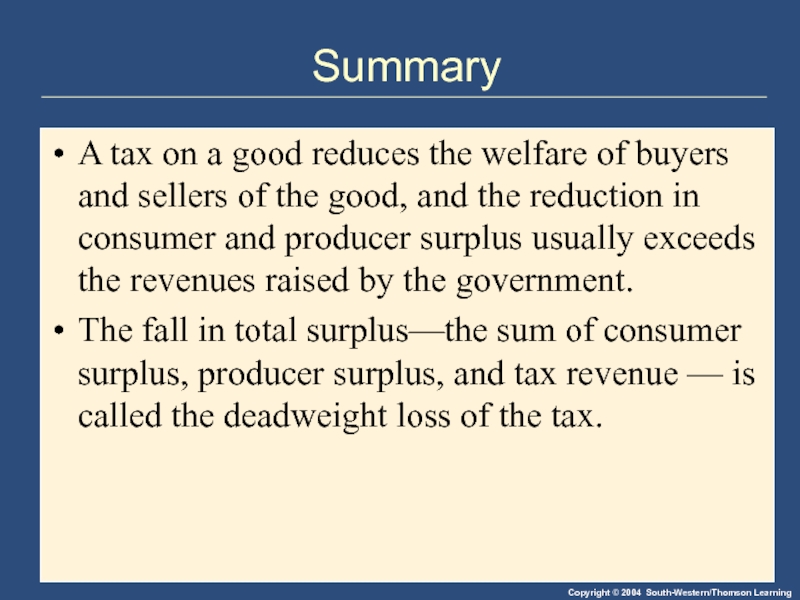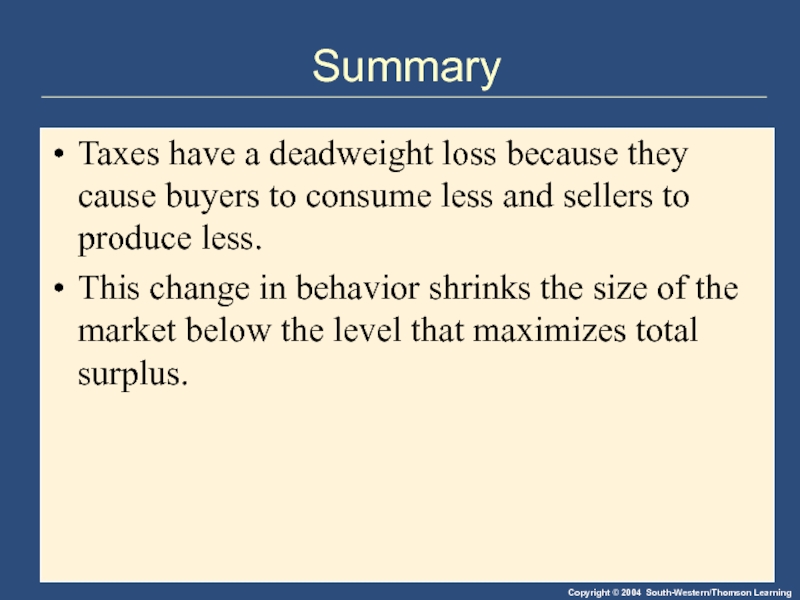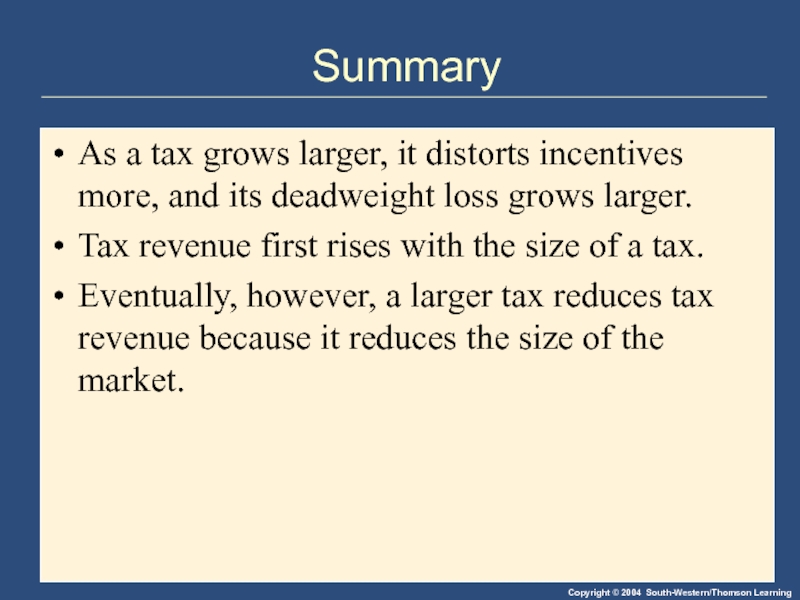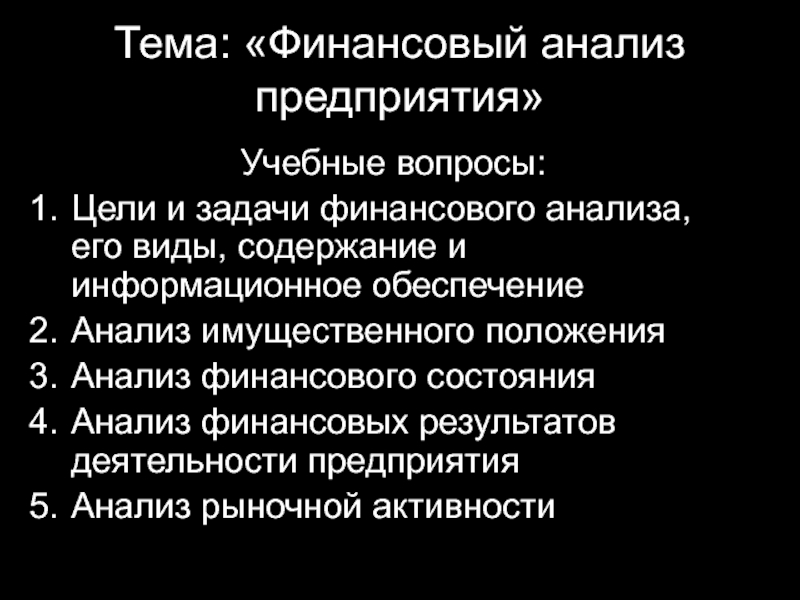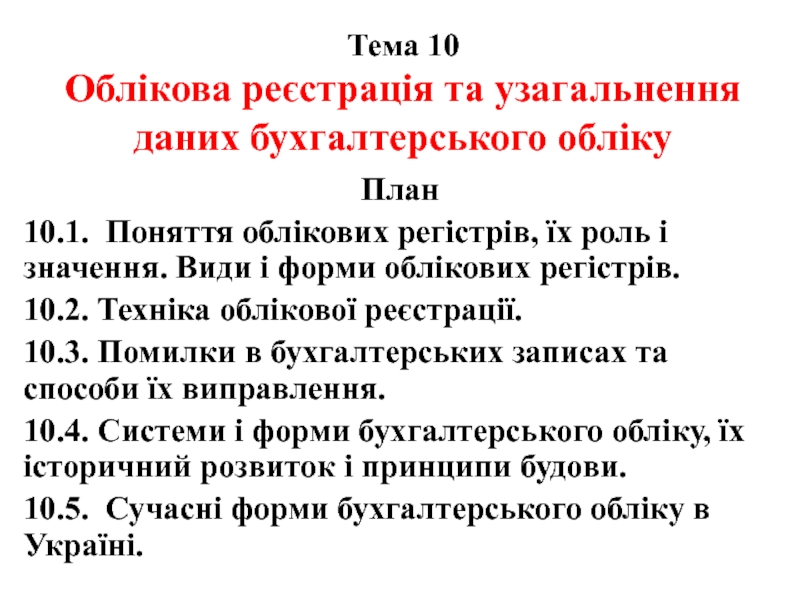- Главная
- Разное
- Дизайн
- Бизнес и предпринимательство
- Аналитика
- Образование
- Развлечения
- Красота и здоровье
- Финансы
- Государство
- Путешествия
- Спорт
- Недвижимость
- Армия
- Графика
- Культурология
- Еда и кулинария
- Лингвистика
- Английский язык
- Астрономия
- Алгебра
- Биология
- География
- Детские презентации
- Информатика
- История
- Литература
- Маркетинг
- Математика
- Медицина
- Менеджмент
- Музыка
- МХК
- Немецкий язык
- ОБЖ
- Обществознание
- Окружающий мир
- Педагогика
- Русский язык
- Технология
- Физика
- Философия
- Химия
- Шаблоны, картинки для презентаций
- Экология
- Экономика
- Юриспруденция
Application: The Costs of Taxation презентация
Содержание
- 1. Application: The Costs of Taxation
- 2. Application: The Costs of Taxation Welfare economics
- 3. THE DEADWEIGHT LOSS OF TAXATION How do taxes affect the economic well-being of market participants?
- 4. THE DEADWEIGHT LOSS OF TAXATION It does
- 5. Figure 1 The Effects of a Tax
- 6. How a Tax Affects Market Participants A
- 7. How a Tax Affects Market Participants
- 8. Figure 2 Tax Revenue Copyright © 2004
- 9. Figure 3 How a Tax Effects Welfare
- 10. How a Tax Affects Market Participants Changes
- 11. How a Tax Affects Welfare
- 12. How a Tax Affects Market Participants The
- 13. Deadweight Losses and the Gains from Trade
- 14. Figure 4 The Deadweight Loss Copyright ©
- 15. DETERMINANTS OF THE DEADWEIGHT LOSS What determines
- 16. Figure 5 Tax Distortions and Elasticities Copyright
- 17. Figure 5 Tax Distortions and Elasticities Copyright
- 18. Figure 5 Tax Distortions and Elasticities Copyright
- 19. Figure 5 Tax Distortions and Elasticities Copyright
- 20. DETERMINANTS OF THE DEADWEIGHT LOSS The greater
- 21. DEADWEIGHT LOSS AND TAX REVENUE AS TAXES
- 22. DEADWEIGHT LOSS AND TAX REVENUE AS TAXES
- 23. Figure 6 Deadweight Loss and Tax Revenue
- 24. Figure 6 Deadweight Loss and Tax Revenue
- 25. Figure 6 Deadweight Loss and Tax Revenue
- 26. DEADWEIGHT LOSS AND TAX REVENUE AS TAXES
- 27. Figure 7 How Deadweight Loss and Tax
- 28. Figure 7 How Deadweight Loss and Tax
- 29. DEADWEIGHT LOSS AND TAX REVENUE AS TAXES
- 30. CASE STUDY: The Laffer Curve and Supply-side
- 31. Summary A tax on a good reduces
- 32. Summary Taxes have a deadweight loss because
- 33. Summary As a tax grows larger, it
Слайд 2Application: The Costs of Taxation
Welfare economics is the study of how
Buyers and sellers receive benefits from taking part in the market.
The equilibrium in a market maximizes the total welfare of buyers and sellers.
Слайд 3THE DEADWEIGHT LOSS OF TAXATION
How do taxes affect the economic well-being
Слайд 4THE DEADWEIGHT LOSS OF TAXATION
It does not matter whether a tax
Слайд 6How a Tax Affects Market Participants
A tax places a wedge between
Because of this tax wedge, the quantity sold falls below the level that would be sold without a tax.
The size of the market for that good shrinks.
Слайд 7How a Tax Affects Market Participants
Tax Revenue
T = the size
Q = the quantity of the good sold
T × Q = the government’s tax revenue
Слайд 10How a Tax Affects Market Participants
Changes in Welfare
A deadweight loss is
Слайд 12How a Tax Affects Market Participants
The change in total welfare includes:
The
The change in producer surplus, and
The change in tax revenue.
The losses to buyers and sellers exceed the revenue raised by the government.
This fall in total surplus is called the deadweight loss.
Слайд 13Deadweight Losses and the Gains from Trade
Taxes cause deadweight losses because
Слайд 15DETERMINANTS OF THE DEADWEIGHT LOSS
What determines whether the deadweight loss from
The magnitude of the deadweight loss depends on how much the quantity supplied and quantity demanded respond to changes in the price.
That, in turn, depends on the price elasticities of supply and demand.
Слайд 16Figure 5 Tax Distortions and Elasticities
Copyright © 2004 South-Western
(a) Inelastic Supply
Price
0
Quantity
Слайд 17Figure 5 Tax Distortions and Elasticities
Copyright © 2004 South-Western
(b) Elastic Supply
Price
0
Quantity
Слайд 18Figure 5 Tax Distortions and Elasticities
Copyright © 2004 South-Western
(c) Inelastic Demand
Price
0
Quantity
Слайд 19Figure 5 Tax Distortions and Elasticities
Copyright © 2004 South-Western
(d) Elastic Demand
Price
0
Quantity
Слайд 20DETERMINANTS OF THE DEADWEIGHT LOSS
The greater the elasticities of demand and
the larger will be the decline in equilibrium quantity and,
the greater the deadweight loss of a tax.
Слайд 21DEADWEIGHT LOSS AND TAX REVENUE AS TAXES VARY
The Deadweight Loss Debate
Some
Some examples of workers who may respond more to incentives:
Workers who can adjust the number of hours they work
Families with second earners
Elderly who can choose when to retire
Workers in the underground economy (i.e., those engaging in illegal activity)
Слайд 22DEADWEIGHT LOSS AND TAX REVENUE AS TAXES VARY
With each increase in
Слайд 23Figure 6 Deadweight Loss and Tax Revenue from Three Taxes of
Copyright © 2004 South-Western
Quantity
0
Price
(a) Small Tax
Слайд 24Figure 6 Deadweight Loss and Tax Revenue from Three Taxes of
Copyright © 2004 South-Western
Quantity
0
Price
(b) Medium Tax
Слайд 25Figure 6 Deadweight Loss and Tax Revenue from Three Taxes of
Copyright © 2004 South-Western
Quantity
0
Price
(c) Large Tax
Слайд 26DEADWEIGHT LOSS AND TAX REVENUE AS TAXES VARY
For the small tax,
As the size of the tax rises, tax revenue grows.
But as the size of the tax continues to rise, tax revenue falls because the higher tax reduces the size of the market.
Слайд 27Figure 7 How Deadweight Loss and Tax Revenue Vary with the
Copyright © 2004 South-Western
(a) Deadweight Loss
Deadweight
Loss
0
Tax Size
Слайд 28Figure 7 How Deadweight Loss and Tax Revenue Vary with the
Copyright © 2004 South-Western
(b) Revenue (the Laffer curve)
Tax
Revenue
0
Tax Size
Слайд 29DEADWEIGHT LOSS AND TAX REVENUE AS TAXES VARY
As the size of
By contrast, tax revenue first rises with the size of a tax, but then, as the tax gets larger, the market shrinks so much that tax revenue starts to fall.
Слайд 30CASE STUDY: The Laffer Curve and Supply-side Economics
The Laffer curve depicts
Supply-side economics refers to the views of Reagan and Laffer who proposed that a tax cut would induce more people to work and thereby have the potential to increase tax revenues.
Слайд 31Summary
A tax on a good reduces the welfare of buyers and
The fall in total surplus—the sum of consumer surplus, producer surplus, and tax revenue — is called the deadweight loss of the tax.
Слайд 32Summary
Taxes have a deadweight loss because they cause buyers to consume
This change in behavior shrinks the size of the market below the level that maximizes total surplus.
Слайд 33Summary
As a tax grows larger, it distorts incentives more, and its
Tax revenue first rises with the size of a tax.
Eventually, however, a larger tax reduces tax revenue because it reduces the size of the market.
